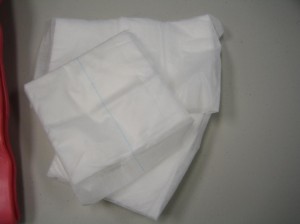Part of the recollection Roman Catholics do during the Lenten Season is to celebrate Jesus’ rising from the dead. When I was young, I took part becoming one of the singing angels positioned at the church patio cheering for Easter. An unforgettable participation was when we had our cotton-filled and feathered wings scathed with fire from the sparks of fireworks which were meant to enlighten the venue while we were rendering melodies. At the sight of the shocked and horror-filled expressions of our audience, as little third-graders, we were abruptly held on by concerned devotees and immediately checked for any injuries. Luckily, I wasn’t hurt as I was at a distance from the lighted fountain and the wings I was wearing were spared from its sparks. Unfortunately, there was a little girl who had one of her legs scalded with first-degree burns. She was held on by her mother on one of the church benches and a senior citizen approached them quickly and handed over a canister of toothpaste which she volunteers to apply on the young girls’ leg. That night, at a young age, I have seen such accidents may happen and that there is a big notion on whether people are prepared rightfully or not.

The urgency to act was present, for any volunteer to hastily attend to the fire-afflicted victim. However, no matter how immediate the intervention, the question lies on whether it was the proper treatment for such. Queries like the following arise: Is it a medically accepted practice? Will it be beneficial to the victim or will it just further harm the patient? Is the person knowledgeable for these kinds of incidents? Has he/she been given proper training to attend to victims? The intention to treat is there, but was it rightfully administered in the implied necessity of the situation?
First aid treatment serves the purpose of bridging the gap between necessary advanced medical management and the delivery of initial intervention by a trained person, however possible, with the resources available at the site of injury. Its goals speak of the importance it serves humanity: to preserve life, prevent further harm, and promote recovery. To do all these, a person must be well-equipped with the knowledge and skills and proper training. Classes are administered by accredited agencies to certify people or even educate the lay-person to respond to any emergency. Misconceptions on certain practices are corrected; such is what I have learned upon my first exposure to first aid training. From the circumstance that happened when I was young, I came to understand that the toothpaste was advised to be applied due to its cooling effect, but on burns it causes a rebound effect and that should never be practised for it can add further complications.
A learned lay-person would be of great help to a victim, if, and only if, what was practised was medically accepted and beneficial to both the rescuer and the patient.
https://www.youtube.com/watch?v=Ns1DPvXVO6I
